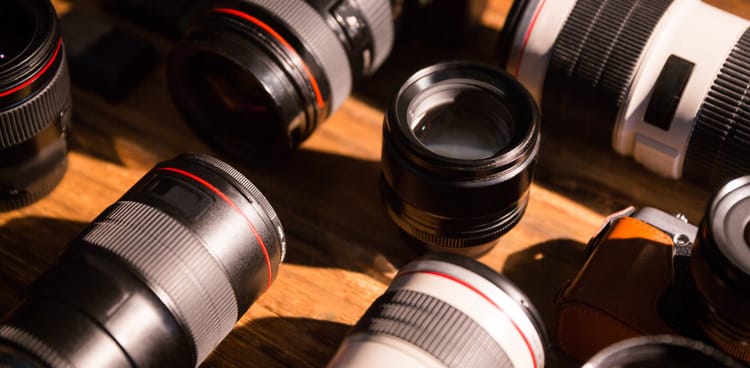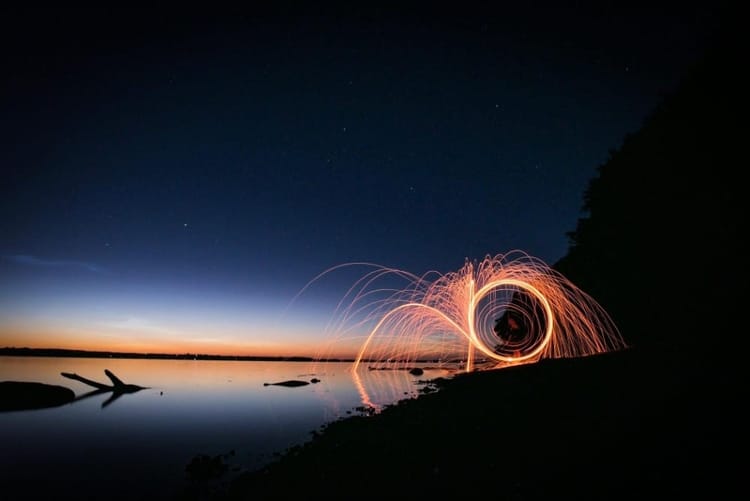How to Take Candid Photography
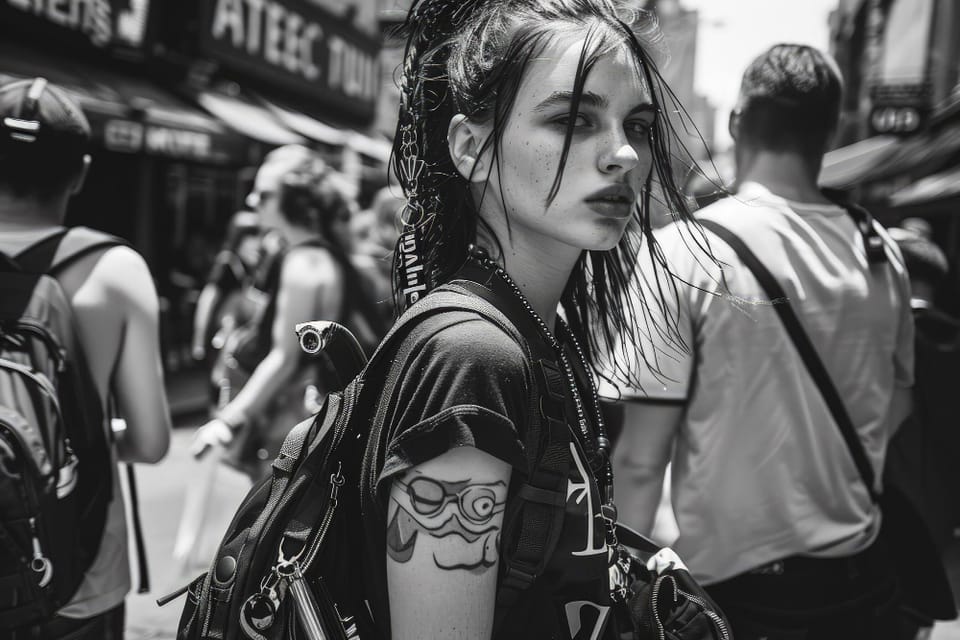
Introduction
What is Candid Photography?
Candid photography refers to capturing people and moments in their most natural, unposed state. Unlike traditional photography, where subjects are aware of the camera and are often positioned or posed, candid photography thrives on spontaneity. The essence of candid photography lies in its authenticity, as it seeks to portray genuine emotions, expressions, and interactions without interference from the photographer.
- Key characteristics of candid photography include:
- Subjects are often unaware they’re being photographed.
- The moments captured are unscripted, spontaneous, and true to life.
- The focus is on storytelling, using images to reflect the natural world as it happens.
The appeal of candid photography is its raw, real, and unfiltered nature. It’s a form of visual storytelling that allows the photographer to capture a moment as it truly unfolds, often resulting in more powerful and emotionally resonant images. This genre is popular in street photography, event photography, and even portraiture when photographers aim to show the subject in their most genuine state.
Why Candid Photography Matters in Today’s World
In today’s highly curated and visually saturated world, where social media platforms and marketing materials often show staged perfection, candid photography offers a refreshing contrast. While posed photographs have their place, the desire for authenticity is growing. Viewers appreciate images that feel real and relatable, and candid photography speaks to this need for sincerity in visual storytelling.
- Relatability and Emotional Impact: Candid images often evoke a deeper emotional response from viewers because they feel more genuine and unfiltered. The imperfections, small details, and fleeting emotions captured in candid shots connect on a personal level, making the viewer feel as if they were part of the moment.
- A Response to the Over-Curated World: In an era where everything from social media posts to advertisements is meticulously crafted, candid photography serves as a reminder of real-life moments. It’s a refreshing break from the overly polished visuals we see daily. This makes candid photos more meaningful in personal, professional, and creative photography contexts.
The Benefits of Candid Photography
- Genuine Emotions: Since the subjects are not posing or aware of the camera, their reactions and expressions are often more authentic. You capture people as they are, whether they’re laughing, lost in thought, or reacting naturally to a situation.
- Storytelling Through Moments: Every candid photograph tells a story. Whether it’s a moment at a family event, a stranger on the street, or children playing, candid photography captures the narrative as it happens, often revealing a deeper layer of human experience.
- Unpredictability and Creativity: With candid photography, you never quite know what you’re going to get. This element of surprise can lead to beautifully unexpected shots that you wouldn’t have been able to plan or pose. It challenges photographers to stay alert and embrace spontaneity.
By mastering the art of how to take candid photography, you can elevate your skills as a photographer, capturing not just pictures but authentic moments that resonate deeply with viewers. In the sections that follow, we’ll dive into specific techniques and tips to help you refine your candid photography and make the most of these unique opportunities.
1. Understanding the Art of Candid Photography
Difference Between Candid and Posed Photography
The primary distinction between candid and posed photography lies in the degree of control and awareness involved in capturing the image.
- Candid Photography:
- Unplanned and Spontaneous: The subjects in candid photography are unaware (or at least not fully aware) of the photographer’s presence. As a result, their actions, expressions, and body language are all natural and unfiltered. The photographer’s role is to observe and wait for these moments to unfold organically.
- Emotionally Authentic: The emotions captured in candid shots are genuine and unscripted. A laugh, a tear, or a fleeting moment of contemplation is not orchestrated but rather reflects true emotion.
- Challenges: The lack of control over the environment and the subjects means you have to rely on your ability to anticipate and react quickly. Lighting, positioning, and composition are not staged, requiring more adaptability from the photographer.
- Posed Photography:
- Intentional and Controlled: Subjects are fully aware of the camera and are usually instructed on how to position themselves, what expression to hold, and how to interact with the camera. Everything from the lighting to the angles is predetermined.
- Composed Perfection: Posed photography is often about perfection—whether it’s capturing a formal portrait, a product shot, or a highly curated lifestyle image, the goal is to show everything in its best light.
- Benefits: In posed photography, you have total control over the outcome, from lighting to the framing of the image. This predictability allows for more technical precision.
Common Misconceptions About Candid Photography
While candid photography may seem like simply pointing the camera and shooting at random, it requires just as much—if not more—skill and intention than posed photography.
- Myth #1: Candid Photography Is Random
- Reality: While candid photos do rely on spontaneity, successful candid photographers are skilled at anticipating moments before they happen. It’s about being patient, observant, and knowing when to click the shutter.
- The photographer often watches body language, facial expressions, or social interactions to time the perfect moment to capture a meaningful shot.
- Myth #2: Candid Photos Are Always Taken Without Permission
- Reality: Although some candid shots are taken without the subject being fully aware, it’s important to respect privacy and legal boundaries. In many cases (especially in professional settings like weddings or events), the subjects may know they are being photographed, but the photographer works unobtrusively to capture natural interactions without interfering.
- Myth #3: Candid Shots Are Just Unposed Photos
- Reality: Candid photography is not simply about avoiding posed shots; it’s about telling a story through moments that occur naturally. While posed images can also tell a story, candid photos often capture the smaller, in-between moments that provide context and authenticity to the larger narrative.
The Role of the Photographer in Candid Photography
While candid photography often highlights the subject, the photographer’s role is crucial in orchestrating the success of the shot despite their minimal involvement with the subject directly. It’s a balance between blending into the background while actively observing and reacting to what’s happening around them.

- Becoming Invisible: The goal is to capture the subject without them altering their behavior because they know they’re being photographed. This requires moving subtly, avoiding eye contact, and being discreet with your camera. Sometimes, it involves using a long lens to stay physically distant, while other times, you’ll need to be in close proximity but act as though you’re not focused on the person.
- Observing Without Interrupting: Candid photography requires an observational mindset. You’re not directing the scene but rather reading the situation as it unfolds. Whether it's at an event, on the street, or in a casual gathering, a candid photographer needs to be fully immersed in their surroundings without altering them.
- Telling the Story Through Context: As a candid photographer, you’re not just taking isolated photos of people; you’re capturing moments that fit into a larger story. That story could be the joy of a wedding celebration, the everyday interactions of people on the street, or the quiet moments at a family gathering. What makes a candid photo compelling is often the context—capturing not just the subject but the surrounding environment, interactions, and details that add depth to the image.
Candid Photography as Visual Storytelling
Candid photography is a powerful form of visual storytelling because it goes beyond just capturing an image; it seeks to convey a narrative. By focusing on genuine, unplanned moments, candid photos often tell a story that feels more authentic and relatable. Whether you’re photographing a street performer, a family reunion, or a group of friends at an event, the candid approach allows you to highlight the subtleties of human interaction.
- Unscripted Narratives: Unlike posed photography, where the story is often predetermined, candid photography thrives on the unexpected. A candid shot can capture fleeting moments of joy, sadness, humor, or surprise, offering a more dynamic and layered narrative.
- Emotion-Driven Imagery: The core of candid photography lies in capturing emotions as they naturally arise. This emotional authenticity helps convey the story of the moment without words, letting viewers connect with the image on a deeper level.
By understanding the fundamental differences between candid and posed photography, debunking common misconceptions, and recognizing the photographer's role in capturing spontaneous, genuine moments, you can begin to master the art of candid photography. It’s a craft that relies on patience, observation, and subtlety, but when done right, it can produce some of the most powerful and meaningful images.
2. Essential Tips – How to take Great Candid Shots
Candid photography is all about capturing real-life moments without interrupting the flow of the scene. This requires a combination of observational skills, technical know-how, and an instinct for timing. Here’s a more detailed breakdown of the essential tips for taking great candid shots.
Stay Invisible and Blend In
To capture authentic moments, the key is to make your presence as unobtrusive as possible. When your subjects know they're being photographed, they may act differently, consciously or subconsciously. Here are ways to stay invisible:
- Dress the Part: If you’re photographing in a specific environment, blend in with the surroundings. For instance, at a formal event, dressing appropriately will help you go unnoticed. If you're doing street photography, avoid flashy clothing that might draw attention.
- Move Quietly and Be Discreet: Try to move smoothly and without sudden motions, as abrupt movements might catch someone’s eye. Instead of hovering directly around your subjects, find a comfortable distance where you can observe naturally unfolding scenes.
- Avoid Direct Eye Contact: If you make eye contact with a subject, it might signal to them that you're paying attention to them, making them self-conscious. Keep your attention elsewhere so people don’t feel targeted by the camera.
- Use a Small, Quiet Camera: Mirrorless cameras or cameras with silent shutter modes are great tools because they don’t produce loud clicks that could give you away. If you're taking candid shots indoors or in quiet environments, the sound of a camera can easily alert people.
Use a Long Lens
A telephoto lens can be your best friend when it comes to candid photography. The ability to zoom in on subjects from a distance allows you to remain unobtrusive while still capturing intimate moments.

- Advantages of Using a Long Lens:
- Physical Distance = Emotional Intimacy: The further away you are, the more relaxed your subjects will feel, leading to more natural expressions and behaviors.
- Compress the Scene: Long lenses compress the background, helping you focus more attention on your subject while still capturing a bit of the surrounding context.
- Which Lens to Use?: A 70-200mm lens is ideal for candid photography. The zoom range allows you to stay far enough away not to intrude, while still giving you plenty of flexibility to capture detailed shots.
Keep Your Camera Ready
In candid photography, moments are fleeting and can disappear in an instant. The last thing you want is to miss a great shot because you’re fiddling with your camera settings or trying to power it on. Here’s how to stay prepared:
- Set Your Camera in Advance: Pre-configure your camera to settings that work for the environment. If you're outdoors in bright light, adjust your aperture, ISO, and shutter speed accordingly so you're ready to shoot quickly. Indoors, consider higher ISO settings to deal with lower light.
- Use a Quick-Access Strap or Holster: Keep your camera at hand, whether it's hanging from a strap or resting on a hip holster. A camera that’s easily accessible will increase the likelihood of you capturing a decisive moment.
- Know Your Camera Inside Out: Familiarize yourself with your camera's buttons, dials, and functions. You should be able to change settings (like aperture or ISO) without needing to look away from your subject. This kind of mastery will save valuable seconds.

Anticipate the Moment
Successful candid photography requires more than luck. You must be able to read the environment, observe human behavior, and anticipate when something meaningful is about to happen.
- Reading Body Language: Pay attention to how people interact with one another. Gestures, facial expressions, and body language can all give clues about what might happen next. For instance, laughter often follows moments of light conversation, and tension might build before an emotional outburst.
- Find Patterns in Behavior: In certain situations, people’s behavior tends to follow patterns. For example, at a wedding, after speeches, there’s often applause and emotional exchanges. Anticipate those moments and be ready to capture them before they happen.
- Patience Is Key: Great candid shots often come after long periods of observation. Be patient and give your subjects time to relax and forget about your presence. Once they’re comfortable, they’ll fall back into their natural behavior.
Shoot in Burst Mode
When capturing fast-moving, dynamic scenes, burst mode is an invaluable tool. It allows you to take a rapid series of shots with just one press of the shutter button, increasing your chances of getting the perfect frame.
- Advantages of Burst Mode:
- Capture Micro-Expressions: Emotions and expressions change quickly, sometimes within milliseconds. Burst mode helps you capture these in-between moments that might otherwise be missed.
- Choose the Best Frame: Afterward, you can review the sequence of shots to find the one that best represents the moment. This is especially useful for action sequences or when photographing children or animals.
- Use Sparingly: While burst mode is incredibly useful, don’t overdo it. Shooting too many images in rapid succession can make sorting through them time-consuming, and you risk filling up your memory card too quickly.
Be Ready for
Candid photography often results in shots that aren't technically perfect, and that’s okay! The beauty of candid shots lies in their authenticity, so don’t obsess over perfection.
- Embrace Imperfections: Sometimes the most meaningful shots are slightly blurry or poorly framed, but they tell a compelling story or capture a powerful emotion. These imperfections can actually enhance the raw, genuine feel of the photograph.
- Focus on the Emotion: In candid photography, what matters most is the feeling the image evokes. Focus less on technical perfection and more on the story, the expression, and the moment.
Utilize Natural Light
Whenever possible, rely on natural light to keep your photos looking organic and unposed. Flash photography often feels too intrusive and can break the candidness of the moment by drawing attention to you.
- Work with Available Light: Observe how light interacts with your subject and use it to your advantage. Position yourself so the light naturally illuminates your subject's face or creates interesting shadows.
- Golden Hour Magic: Early mornings and late afternoons are perfect times for candid photography because the light is soft, warm, and flattering. This helps to create a more visually appealing and gentle atmosphere in your shots.
- Avoid Using Flash: The burst of light from a flash can not only ruin the candidness of the shot but also draw attention to you, disrupting the natural flow of the moment. If you're in low light, consider using a faster lens with a wide aperture or increasing your ISO setting.
Capture Moments, Not People
One of the best ways to approach of how to take candid photography is to focus not just on individuals but on the moments unfolding between them. By shifting your mindset to capture interactions and relationships, your photos will have greater storytelling power.
- Look for Reactions, Not Just Actions: The reaction to an event can often be more interesting than the event itself. Focus on how people react to their surroundings, whether it’s joy, surprise, or quiet contemplation.
- Include Context: When shooting candids, don’t just zoom in on a person’s face; try to capture some of the environment or the interaction between people. Including elements of the surroundings can give your images more context and depth, making the story richer.
By mastering these essential tips, you’ll greatly improve your ability to take compelling candid shots. From blending into the background and using the right gear, to anticipating moments and embracing imperfections, candid photography requires a mix of technical knowledge, patience, and an eye for genuine moments. The key is to stay ready, observant, and connected to your surroundings, allowing you to capture the raw beauty of life as it unfolds naturally.
3. Mastering Camera Settings for Candid Photography
To capture great candid shots, mastering your camera settings is essential. Since candid photography involves spontaneous moments, your camera needs to be ready for any situation, from fast action to low-light conditions. Here's an in-depth look at how to optimize your camera settings for your ability on how to take candid photography.
Using Aperture Priority Mode (A or Av Mode)
Aperture Priority Mode is one of the most versatile and user-friendly settings for candid photography because it gives you control over depth of field (DOF) while letting the camera automatically adjust the shutter speed. This is particularly useful for candid photography, where you need to be quick but still want creative control.

- What is Aperture?
- Aperture refers to the size of the opening in the lens through which light passes. It’s measured in f-stops (e.g., f/2.8, f/5.6, f/8). Lower f-stop numbers (e.g., f/2.8) mean a larger aperture, which lets in more light and creates a shallow depth of field, making the background blur and the subject pop. Higher f-stops (e.g., f/8 or f/11) give you a wider depth of field, keeping more of the scene in focus.
- Why Use Aperture Priority for Candid Shots?
- Faster Adjustments: You don’t have to worry about adjusting the shutter speed manually in fast-moving situations. The camera will automatically set the correct shutter speed based on the lighting and your chosen aperture.
- Isolate Your Subject: In candid photography, you often want to separate your subject from a busy background. A wide aperture (e.g., f/2.8 or f/4) will blur out distracting elements and keep the focus on your subject, which is especially useful in street photography or at events.
- Control Over Sharpness: A smaller aperture (e.g., f/8 or f/11) is useful when you want everything in the frame to be in sharp focus, like in group shots or landscapes with human subjects.
- Best Practices:
- For individual portraits or close-up candid shots, start with a wider aperture (around f/2.8 to f/5.6) to get a blurred background and emphasize your subject.
- For group photos or when you want to keep more of the environment in focus, use a smaller aperture (f/8 or higher) to ensure sharpness across the scene.
Adjusting ISO for Changing Conditions
ISO determines your camera’s sensitivity to light, and it's crucial for candid photography, especially in environments where lighting conditions change rapidly. Properly managing ISO can help you capture sharp, well-exposed photos even in tricky lighting scenarios.
- What is ISO?
- ISO measures the sensitivity of your camera’s sensor to light. A lower ISO number (e.g., 100 or 200) is used in bright conditions and results in cleaner images with less noise (graininess). A higher ISO (e.g., 1600 or 3200) is used in low-light situations but may introduce more noise into the image.
- Why ISO Matters in Candid Photography:
- Since candid moments can happen in any lighting condition—whether indoors, outdoors, or in dim settings—your ability to quickly adjust ISO ensures that your photos remain well-exposed.
- In low-light situations, like evening events or indoor gatherings, raising your ISO allows you to shoot without a flash, which would disrupt the candid nature of the scene.
- Best Practices:
- In bright daylight, use a low ISO (100-200) to maintain image quality and reduce noise.
- In indoor or low-light settings, start with ISO 800 or 1600. If it's too dark, don’t hesitate to push the ISO to 3200 or higher. Modern cameras handle high ISO values better, producing less noise than older models.
- Auto ISO can be a helpful feature for candid photography because it automatically adjusts the sensitivity based on the available light, allowing you to focus more on composition and timing.

Shutter Speed for Candid Photography
Shutter speed controls how long your camera’s sensor is exposed to light. It’s crucial for capturing motion, whether you want to freeze a fleeting moment or add motion blur to show movement. In candid photography, fast and slow shutter speeds both have their uses depending on the situation.
- What is Shutter Speed?
- Shutter speed is the amount of time the camera’s sensor is exposed to light. A fast shutter speed (e.g., 1/1000 sec) freezes motion, while a slow shutter speed (e.g., 1/30 sec) captures movement, potentially introducing motion blur.
- Why Shutter Speed is Important for Candid Shots:
- Fast Shutter Speeds: Candid photography often involves people moving unpredictably, so using a fast shutter speed (1/250 sec or faster) ensures you freeze the action without blurring the subject. This is especially useful when photographing children, street performers, or people in lively environments.
- Slow Shutter Speeds: On the other hand, a slower shutter speed can be useful for creating motion blur when you want to convey a sense of movement, like a bustling crowd or someone walking quickly.
- Best Practices:
- For freezing fast action, aim for a shutter speed of 1/250 sec or faster, especially if you're shooting in daylight or well-lit environments. This will help avoid motion blur in your subjects, especially when capturing lively moments or fast-moving people.
- In low-light environments, balance your shutter speed with your aperture and ISO. A slower shutter speed (around 1/60 sec) may still work if your subjects aren’t moving too fast, but be mindful of the risk of blurring.
- If you're shooting in Aperture Priority Mode, your camera will select an appropriate shutter speed based on your chosen aperture, but make sure it's fast enough to avoid motion blur unless you're intentionally aiming for it.
Auto vs. Manual Focus
In candid photography, getting the focus right is critical since the moments are fleeting. There’s a debate about whether to use auto or manual focus, and each has its advantages depending on the situation.
- Auto Focus:
- Single Point Focus: This allows you to focus on a specific area of the frame, which is perfect when you have a clear subject in mind, like a person’s face. It gives you precision but requires quick reflexes.
- Continuous Auto Focus (AF-C): This is ideal for moving subjects. The camera will continually adjust the focus as your subject moves, making it easier to capture sharp images, especially in action-packed environments. This setting is particularly useful in street photography or during events with a lot of movement.
- Manual Focus:
- Manual focus can be helpful if you're photographing in low-light conditions where auto-focus may struggle. It also gives you complete control, which is useful in slower-paced situations where you have time to compose your shot.
- However, manual focus can be slower, and for fast-moving candid photography, it might cause you to miss critical moments. Use it sparingly in high-pressure situations.

Using Burst Mode and Continuous Shooting
Burst mode (or continuous shooting mode) is essential for candid photography, especially when trying to capture fast-paced scenes or fleeting emotions. It allows you to take several shots in rapid succession, improving your chances of getting the perfect moment.
- Why Use Burst Mode?
- Capture Fast Movements: When photographing children, sports events, or lively environments, burst mode allows you to capture a series of shots in a short time, which increases the likelihood of freezing the perfect moment in motion.
- Capture Subtle Changes in Expression: Human expressions change in a fraction of a second. Burst mode lets you capture multiple frames so you can select the one with the most authentic or powerful expression.
- Best Practices:
- Short Bursts: Use burst mode in short bursts to capture key moments rather than holding down the shutter for too long. This will help avoid unnecessary images and make post-processing more manageable.
- Combine continuous autofocus (AF-C) with burst mode for optimal sharpness when tracking moving subjects.
White Balance Settings
White balance ensures that the colors in your images look natural under various lighting conditions. In candid photography, where you don’t have control over the lighting, getting the right white balance helps maintain the authenticity of the scene.
- Why White Balance Matters:
- Natural Skin Tones: Candid shots often feature people, so having accurate white balance is important for maintaining natural-looking skin tones.
- Adapting to Lighting Conditions: Whether you're indoors under artificial lights or outdoors in natural light, different lighting conditions affect the color temperature. If white balance is off, your images may have an unnatural tint (too warm or too cool).
- Best Practices:
- Use Auto White Balance (AWB) if you're moving through rapidly changing environments, as this setting adjusts dynamically based on the available light.
- For more consistency, manually select white balance presets such as Daylight, Cloudy, or Tungsten based on your environment. This ensures that all your shots in a series will have a similar color tone.
- In tricky lighting conditions, shoot in RAW format, as this allows you to adjust the white balance during post-processing without losing image quality.
By mastering these camera settings, you'll have greater control over your candid shots, allowing you to adapt quickly to different situations while still capturing spontaneous, authentic moments. Whether you're shooting in low light
4. Composition and Framing in Candid Shots
Composition and framing are crucial in creating captivating, candid shots that tell a story or evoke emotion. While candid photography is often spontaneous, applying key composition techniques helps ensure that your images remain visually strong and engaging. Here’s a deeper dive into how you can master composition and framing for candid shots.
Rule of Thirds
The rule of thirds is one of the most fundamental composition techniques and works wonders for candid photography. It involves dividing your frame into nine equal sections by two horizontal and two vertical lines, then positioning your subject or key elements along these lines or at their intersections.
- Why the Rule of Thirds Works:
- Creates Balance: Positioning your subject off-center adds dynamic tension and balance to the image, making it feel more natural and less rigid than a centered composition.
- Focuses Attention on Key Elements: Placing your subject on one of the intersections (known as a “power point”) draws the viewer’s eye to the most important part of the image without it being too obvious or overwhelming.
- How to Apply the Rule of Thirds in Candid Photography:
- Human Subjects: When photographing people, place their eyes, face, or hands along one of the thirds, especially if the person is interacting with others or their surroundings. This adds a sense of flow and natural movement to the composition.
- Moving Subjects: Position the subject slightly off-center to allow space in the direction they’re moving or looking, which gives the image a sense of progression and narrative.
- Environmental Context: Use the other sections of the grid to incorporate important background elements. This helps give your candid shot context without overpowering the subject.
Framing and Leading Lines
Framing and leading lines are powerful compositional tools that direct the viewer’s gaze and add depth to your candid shots. These elements guide the eyes naturally to your subject or enhance the sense of space and narrative.
- Framing Your Subject:
- Natural Frames: Look for natural objects within the environment to “frame” your subject. These can be doorways, windows, arches, tree branches, or even other people. By shooting through or around these elements, you can focus attention on your subject while adding layers of depth to the image.
- Foreground Elements: Including objects in the foreground (even blurred) helps create a sense of dimension, leading the viewer into the image. For example, photographing a person through a crowd of people adds a sense of intimacy and immersion in the moment.
- Leading Lines:
- What Are Leading Lines?: Leading lines are naturally occurring lines in the environment (roads, fences, buildings, shadows, etc.) that direct the viewer’s eyes toward the subject. These lines add structure and rhythm to the image.
- How to Use Leading Lines in Candid Photography: Look for architectural elements, paths, or rows of objects that can lead the viewer toward your subject. If you’re photographing a street scene, use the pavement, buildings, or traffic lines to naturally guide the eye to the focal point.
- Diagonal and Converging Lines: Diagonal lines are especially powerful in candid photography as they create a sense of movement and dynamism. Converging lines (lines that meet at a point) also add perspective and depth, making your candid shot feel more three-dimensional.
Shoot from the Hip
“Shooting from the hip” is a technique often used by candid photographers to capture natural, unposed moments without the subject knowing they’re being photographed. While it can be unpredictable, it offers unique perspectives that can make your shots more dynamic and spontaneous.
- Why Shoot from the Hip?
- Discretion: Shooting from waist level or without looking through the viewfinder helps you remain inconspicuous, reducing the likelihood of your subjects noticing you. This results in more genuine and uninhibited behavior.
- Unexpected Angles: Shooting from a lower perspective can produce interesting, dramatic angles that make the shot stand out. It also gives your photos a more immersive feel, as the angle captures the scene from a less typical point of view.
- How to Shoot from the Hip:
- Use a Wide-Angle Lens: A wide-angle lens gives you more room for error when framing your shot since it captures a larger portion of the scene. This increases your chances of getting your subject in frame, even without looking through the viewfinder.
- Take Multiple Shots: Because you’re not composing through the viewfinder, take multiple shots to increase the likelihood of getting a good composition. You can always cull unwanted images later.
- Experiment with Angles: Try holding your camera at different heights or tilting it slightly to see how it affects the composition. The goal is to capture unique, unconventional perspectives that make your candid photos feel more dynamic and interesting.
Pay Attention to Backgrounds
The background in a candid shot can either enhance or distract from your subject, so it’s important to be mindful of what’s happening behind your main focus. An effective background complements the subject and helps tell the story without overpowering it.
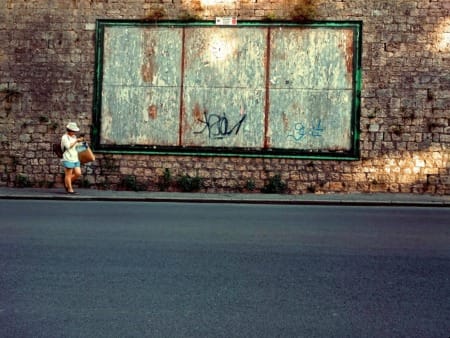
- Eliminate Clutter: Busy, cluttered backgrounds can draw attention away from your subject and make the image feel chaotic. When framing your shot, look for ways to isolate your subject against a cleaner backdrop. Using a shallow depth of field (wide aperture) can help blur out distractions.
- Incorporate Environmental Elements: Sometimes, the background plays a key role in providing context or adding to the narrative of the image. For example, in street photography, the architecture, signage, or surrounding people can help tell a larger story about the subject’s environment. Be conscious of how the background interacts with the main subject.
- Watch for Mergers: A common compositional mistake is having objects in the background appear to “merge” with your subject (e.g., a tree or pole appearing to grow out of someone's head). Always scan your scene for these awkward alignments and adjust your framing accordingly to avoid them.
Use Negative Space
Negative space refers to the empty areas in a photograph that surround your subject. These areas are just as important as the subject itself, as they provide breathing room and focus the viewer's attention on the main subject. In candid photography, negative space can add drama, simplicity, or mood to an image.
- Why Negative Space is Powerful:
- Focus on the Subject: Negative space helps draw attention to your subject by giving them more visual emphasis. For instance, placing a person against a vast, uncluttered sky or open space makes them the central focus of the image.
- Create a Sense of Loneliness or Solitude: If your subject is surrounded by negative space, the composition can evoke feelings of isolation, calmness, or quiet, which can be powerful in storytelling.
- Best Practices for Using Negative Space:
- Look for Minimalistic Scenes: Simpler backgrounds or empty spaces, like walls or open landscapes, create opportunities to use negative space effectively.
- Leave Room for Context: Instead of filling the entire frame with your subject, give them space to breathe. For example, if someone is walking, leave room in front of them to create a sense of direction and movement.
Get Close and Fill the Frame
In candid photography, there’s often a tendency to shoot from a distance to avoid disturbing the scene, but sometimes getting closer to your subject creates a more impactful and intimate image.
- Why Fill the Frame?
- Eliminate Distractions: When you move in closer, you can crop out unnecessary elements that might clutter the scene. By focusing more tightly on your subject, you bring the viewer’s attention directly to the heart of the moment.
- Showcase Emotion and Detail: Filling the frame allows you to capture finer details, like facial expressions, hands, or subtle interactions that might be lost in a wide shot. These intimate details add emotional depth to your candid shots.
- How to Fill the Frame:
- Zoom In: Use a telephoto lens to zoom in on the subject without physically intruding into their space. This allows you to capture details while remaining discreet.
- Get Physically Closer: In certain situations, such as family gatherings or events, you might be able to physically get closer to your subject without breaking the candidness. Being in the moment can help capture raw emotions up close.
Diagonal and Dynamic Composition
Introducing diagonal lines or placing subjects at angles can create a sense of motion, energy, and dynamism in your candid shots. Diagonal compositions break the static, orderly feel of horizontal and vertical lines, adding a sense of movement and action.
- Using Diagonals:
- Why Diagonals Work: Diagonal lines add tension and movement to a scene, making the composition more engaging and dynamic. They guide the viewer’s eye through the image in a fluid way.
- How to Find Diagonals: Look for natural lines in the environment, such as roads, fences, staircases, or even the way people are positioned or moving. Incorporating these into your composition adds flow and energy.
- Dynamic Angles:
- Don’t be afraid to tilt your camera slightly or shoot from unconventional angles. Tilting your frame adds a sense of action or chaos, which can enhance the emotion or narrative of the scene.
By applying these composition and framing techniques, you can take your candid photography to the next level. Whether you’re consciously framing your shot with leading lines or shooting from the hip for a more spontaneous feel, understanding how to compose your image thoughtfully will lead to more impactful, storytelling-driven photos. These principles will help
5. Working with People in Candid Photography
Capturing candid moments often involves photographing people in their natural, unposed states. Working with people in candid photography requires not only technical skills but also the ability to build rapport, maintain discretion, and respect boundaries. Let’s delve deeper into the strategies and considerations for effectively working with people while maintaining the authenticity of candid photography.
Gaining Trust
Trust is a crucial element in candid photography, especially when you're photographing in more personal or intimate settings like family events, weddings, or private gatherings. When people trust you as the photographer, they are more likely to act naturally, allowing you to capture authentic moments.
- How to Gain Trust:
- Be Present but Unobtrusive: Make sure your presence doesn’t feel intrusive. If people are aware you’re around but not constantly noticing you, they’ll become more relaxed and will eventually behave as though you’re not even there. This is particularly useful in settings where you’re photographing friends or acquaintances.
- Engage with Your Subjects: Before you start taking photos, take some time to talk to the people you're photographing. A simple conversation helps break the ice and makes your subjects feel more comfortable around the camera. If you're at an event, introduce yourself to people, so they don’t feel like you're a stranger with a camera.
- Be Approachable: If someone notices you taking photos and asks questions or seems curious, be friendly and explain your approach. Assure them you’re trying to capture natural moments and not trying to impose or disrupt the flow of the event.
- In Street Photography:
- Blend In: In street photography, blending into the environment is key to gaining the trust of the people around you. Dress inconspicuously and behave like a passerby, so people don't notice you as an outsider trying to capture their moments.
- Smile and Acknowledge: If your subject notices you after the shot, a simple smile and friendly nod can go a long way in establishing trust. Often, people are more accepting of candid photographers if they feel you're respectful and not invading their personal space.
Let the Moment Unfold Naturally
One of the hallmarks of candid photography is capturing people as they are, without any interference. Encouraging natural behavior is key to getting the most authentic shots.
- Avoid Giving Instructions: Unlike posed photography, where direction is necessary, in candid photography you should avoid giving explicit instructions. Let people act naturally and allow the scene to develop without your influence. For instance, if you’re photographing a conversation between friends, don't ask them to "move closer" or "look this way"—instead, position yourself to capture the interaction as it happens.
- Read the Room: Understanding the mood and energy of the environment is crucial for capturing moments authentically. At a lively event, people may be more expressive, while at a quiet gathering, their gestures and interactions may be more subtle. Tailor your approach to match the setting, so your presence doesn’t change the dynamics of the scene.
Make People Feel Comfortable
People often become self-conscious when they know they’re being photographed, even in candid settings. Helping your subjects feel comfortable is essential to capturing genuine, unposed moments.
- Keep the Camera Visible but Non-Intimidating: In some settings, like social events or family gatherings, it's beneficial to keep your camera out and visible. When people see you with your camera early on, they gradually become accustomed to it and are less likely to alter their behavior once you start shooting.
- Use a Smaller, Less Intimidating Camera: If possible, use a mirrorless or compact camera rather than a large DSLR, which can feel intrusive. A smaller camera feels less imposing and helps your subjects relax.
- Work from a Distance: Using a telephoto lens allows you to maintain physical distance from your subjects while still capturing close-up, intimate moments. When people feel like you’re not right next to them, they’re more likely to forget about the camera and act naturally.
- Break the Ice with Group Shots: If you’re in a setting like a wedding or family gathering, start with a few posed group shots. This often helps people relax and get used to your presence, after which you can transition into candid photography as they interact naturally with each other.
Respecting Privacy and Boundaries
One of the biggest ethical considerations in candid photography is respecting people’s privacy and understanding where to draw the line. Not every moment should be captured, and not everyone may be comfortable being photographed candidly.
- Know the Legal Boundaries:
- Public vs. Private Spaces: In many countries, photographing people in public spaces (like streets or parks) is legally permitted, as there's no expectation of privacy. However, if you’re in a private space (like someone’s home, a private event, or certain commercial venues), you may need to get permission before taking photos.
- Street Photography Laws: Different countries and cities have different regulations regarding street photography. For example, in some places, photographing strangers without their consent is perfectly legal in public spaces, while in other regions, there may be restrictions. Always research local laws before shooting, especially in international locations.
- Recognize Personal Boundaries:
- Read Body Language: If a person seems uncomfortable or starts reacting to your camera negatively (e.g., by looking away or trying to hide their face), respect their personal boundaries and stop shooting. It’s important to ensure that your photography doesn’t make anyone feel uneasy or violated.
- Ask for Permission: While candid photography often involves capturing moments without explicit permission, there are times when asking is necessary. If someone looks directly at your camera and seems uncertain, you can ask them if they’re okay with you taking their photo. A polite inquiry can diffuse tension and show respect.
- Handling Objections: If someone objects to being photographed after you've taken their picture, be respectful and offer to delete the photo if necessary. In street photography, for example, it’s essential to maintain ethical standards and be willing to respect people’s wishes when it comes to their personal image.
Capturing Emotion Without Interfering
One of the primary goals of candid photography is to capture raw, genuine emotions without altering the flow of the moment. Emotions are often subtle and fleeting, so being patient and observant is key.
- Patience is Key: Great candid shots don’t happen every minute. Often, you’ll need to spend time observing the people you’re photographing, waiting for a moment where emotions bubble to the surface—whether it’s laughter, joy, reflection, or sorrow.
- For example, at a wedding, instead of photographing the bride and groom during formal poses, capture the moment they exchange a private glance, or the reaction of their parents watching them. These subtle moments convey deeper emotion and narrative.
- Anticipate the Moment: While it’s impossible to control candid moments, you can often anticipate emotions by reading body language, facial expressions, and the energy in the room. For instance, at social gatherings, moments of laughter often follow a lively conversation. Position yourself to capture those spontaneous reactions.
- Observe Interactions: Instead of focusing on individuals, look at how people interact with each other. Capturing two or more people in a candid moment can result in more compelling images. Whether it’s friends joking, a couple sharing a quiet moment, or children playing together, these interactions often hold the most emotional weight.
Be Aware of Cultural Sensitivity
When photographing in different cultural or social settings, it's important to be aware of cultural norms, sensitivities, and expectations surrounding photography.
- Understand Cultural Norms: In some cultures, photography—especially candid photography—can be seen as intrusive or inappropriate. Be mindful of how different groups view photography, and adjust your approach accordingly.
- Get Consent in Sensitive Situations: In some cultural contexts, people may be uncomfortable with their photos being taken, especially in more private or religious settings. When in doubt, ask for consent, particularly if you're photographing in a new cultural environment.
Post-Processing: Keeping It Natural
While post-processing is a key part of photography, the goal of candid shots is to retain the authenticity of the moment. Here are a few tips for ethically editing candid shots:
- Subtle Edits: Enhance colors, contrast, and sharpness without over-processing. Avoid heavy filters or over-smoothing skin, as this can detract from the natural, raw feel of candid photography.
- Respect People’s Dignity: Avoid sharing or editing images in a way that could embarrass or misrepresent the subject. For instance, avoid zooming in on unflattering facial expressions or awkward moments unless the image genuinely captures the essence of the scene.
By following these guidelines, you can successfully work with people in candid photography, creating natural, engaging images while respecting your subjects' boundaries and privacy. Whether you’re capturing street scenes, family moments, or spontaneous interactions, the key is to maintain a balance between being present and invisible, ensuring that your subjects feel comfortable and their emotions are portrayed authentically.
Conclusion: The Art of Capturing Real Life
Candid photography is a powerful way to capture the beauty and authenticity of everyday life. It allows photographers to tell compelling stories through unplanned, genuine moments, making it one of the most emotionally resonant forms of photography. As you hone your skills, it’s essential to remember that candid photography is about much more than just taking random snapshots—it’s about observing, anticipating, and connecting with your surroundings.
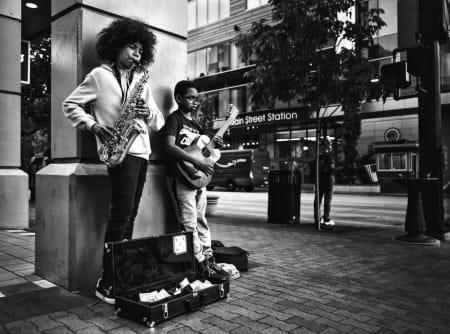
The Importance of Patience and Observation
Mastering candid photography takes time and practice. The key to great candid shots is patience. Moments often unfold slowly, and as a photographer, your job is to stay alert and ready to capture the perfect moment when it arises. Learn to observe people, understand their body language, and be in tune with the environment. This attentiveness will allow you to anticipate moments before they happen, giving you an edge in capturing authentic, emotionally charged scenes.
- Cultivate Patience: Whether you’re shooting street scenes or events, don’t rush. Wait for the story to unfold naturally rather than forcing it. Sometimes the best moments come when you least expect them, and being patient allows you to be there when they do.
- Refine Your Observational Skills: Successful candid photographers are often excellent observers of human behavior. By understanding how people interact, what they’re likely to do next, or how the environment might influence their actions, you can position yourself for the perfect shot.
Capturing Emotion and Storytelling
The emotional power of candid photography lies in its ability to tell a story through raw, unfiltered moments. Whether it’s the laughter of friends, a couple sharing a quiet moment, or a street scene filled with activity, your role as a candid photographer is to find those stories in everyday life.
- Focus on Emotion: The most impactful candid photos are often those that capture a powerful emotion—joy, sadness, surprise, or contemplation. Look for these emotional moments and let them guide your composition and framing.
- Tell a Story: Each candid shot should tell a part of a story. Whether it’s the overall narrative of a wedding day or the simple story of a child playing, the context of the moment is just as important as the subject. The best candid photos give the viewer a glimpse into a moment, allowing them to imagine the larger story behind it.
Balancing Technical Skill with Spontaneity
While the technical aspects of candid photography—such as camera settings, composition, and lighting—are important, don’t let them overpower the spontaneity that makes candid photography special. Candid shots are about capturing real life as it happens, and sometimes that means letting go of perfection and embracing the imperfections that come with the spontaneity of the moment.
- Stay Technically Prepared: Understand your camera’s settings and have them ready for quick adjustments. Whether it’s working with aperture, ISO, or shutter speed, being technically proficient allows you to adapt quickly and capture moments without missing a beat.
- Embrace Imperfections: Not every candid photo will be perfectly composed or technically flawless. But often, it’s these imperfections that add to the authenticity and emotional power of the image. Don’t be afraid to capture a slightly blurry moment if it conveys a powerful emotion or tells an important part of the story.
Ethical and Respectful Candid Photography
One of the most important aspects of candid photography is maintaining respect for your subjects, especially when you’re photographing in public spaces or during intimate events. Always consider the ethical implications of your photography, and prioritize your subjects' comfort and privacy.
- Respect People’s Boundaries: Whether you're doing street photography or capturing moments at a private event, always be aware of how people are reacting to your presence. If someone seems uncomfortable, it's better to lower your camera and move on. Respectful photography leads to better interactions and often more authentic shots.
- Be Culturally Sensitive: If you're photographing in different cultural settings, take time to understand the norms and expectations regarding photography. Some cultures are more sensitive to candid photography, so ensure you're respectful and aware of any local customs.
Call to Action
Now that you’ve explored the art of candid photography, it’s time to put these techniques into practice. Grab your camera, head out into the world, and start observing. Whether you’re capturing street scenes, family moments, or spontaneous emotions at an event, remember that candid photography is about capturing the realness of life. Embrace the unpredictability, trust your instincts, and most importantly, keep shooting.
- Share Your Experience: Have you had success with candid photography or encountered challenges while trying to capture authentic moments? Share your stories, tips, and favorite candid shots in the comments below. Let’s continue the conversation and inspire one another to capture more genuine moments.
- Explore Related Content: If you’re interested in learning more, check out our related blog posts on street photography, portrait photography, and tips for post-processing candid shots. Each guide offers more in-depth techniques to help you refine your craft and create meaningful images.
In conclusion, candid photography allows you to capture life’s fleeting moments in their most natural form. It challenges you to be observant, patient, and technically prepared, while also encouraging you to maintain respect for the people and moments you photograph. With time and practice, your candid photography will become more than just images—it will become a way to tell the true stories of the world around you.


